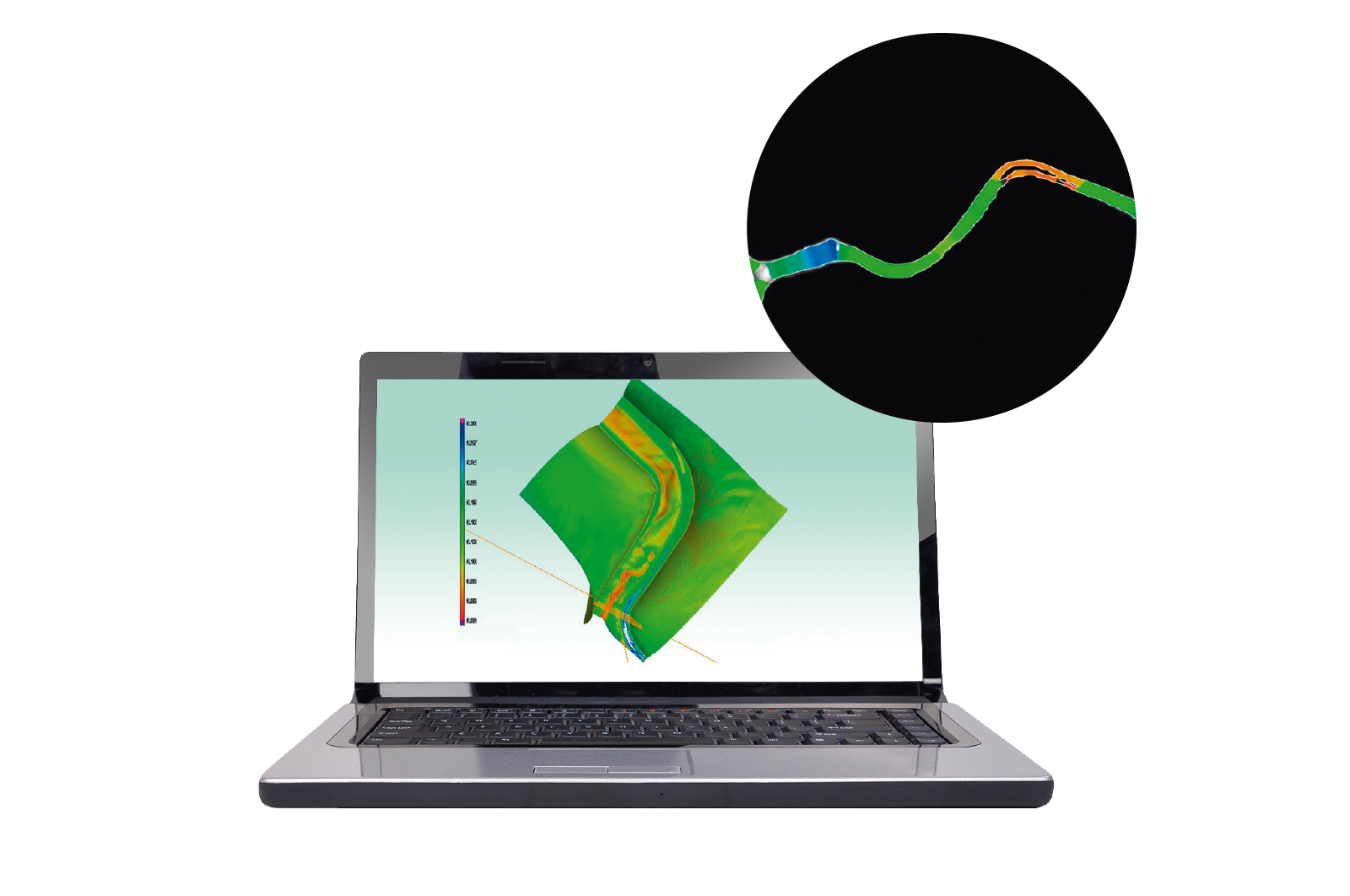
The new process enables a greater design variety of multi-chamber products as well as greater safety during handling by the consumer.
Good is not good enough – this philosophy motivates people at Harro Höfliger and in particular the Engineering & Innovation Services team. When it comes to improving established solutions or developing promising technologies for the future, the 16 employees go beyond their daily routine, bring out their creativity and literally put processes to the test.
They also scrutinized the heat sealing of water-soluble multi-chamber polyvinyl alcohol (PVOH) formed packs filled with detergents or cleaning agents. The result: For the production of the pouches, Harro Höfliger now counts on an innovative water sealing process based on a modified inkjet printhead. With the help of this device, water is applied with utmost precision and control to the lid film which then begins to dissolve. A roller then accurately applies it to the thermoformed base film filled with powder or gel.
Contact of the films results in a very homogeneous, dense and extremely durable sealing seam, which is much narrower than with heat sealing. Not only does this increase the design variety of the multi-chamber products, it also allows a more compact shape. Consequently, more packs can be produced per cycle with the same film width. In addition, the contactless water application causes no contamination and thus reduces the cleaning and maintenance efforts and expenses for the system. For consumers, the improved pressure stability means even more safety in handling.
Creativity first, followed by process optimization
“And yet creativity is not something we do for ourselves. We always develop with a focus on applications to meet the needs of the market,” emphasizes Achim Wolf, Head of Engineering & Innovation Services.“The driving force behind this innovation project were our customers’ new requirements for haptics and the design of multi-chamber products. We wanted to provide more attractive options for formed packs and make production even more efficient.”
“Creativity is not something we do for ourselves. We always develop with a focus on applications to meet the needs of the market.“Achim Wolf, Head of Engineering & Innovation Services
In accordance with the internal innovation management processes at Harro Höfliger, the team approached the water sealing project systematically in several phases.
“We start with proof of concept tests. Four different ideas were put forward for water sealing and we tested them all extensively. The printhead turned out to be ideal because every single drop of water can be precisely controlled and the contactless application offers many advantages,” explains Wolf.
In the next phase, testing the process capability on the prototype, his team focused on the need for 24/7 production at high speed right from the start. The Omni FS semi-automatic machine produced water-sealed samples that had to pass pressure, drop and dissolution tests. Only then was the system integrated into the customer’s production line. “If necessary, my team is on site at the customer’s premises until optimization is complete. Our in-house tests have resulted in complex knowledge that we are happy to pass on. We start with creativity, then we transition into process optimization,” explains Wolf.
More accuracy, less material
However, water sealing is only one piece of the puzzle in the constant optimization of production processes for multi-chamber pouches. Achim Wolf’s team is also working on technical solutions and process parameters for the forming process, for example to reduce the material consumption of PVOH films. A new dosing process, enabling the filling of the powder formulation even more precisely and cleanly, has already been developed. In the next phase it will be adapted for customized application. Achim Wolf: “We are constantly revising the entire process and are always developing new products for our customers.”
Download this article as PDF file
Photos: Helmar Lünig, shutterstock.com/Haywiremedia, Harro Höfliger




